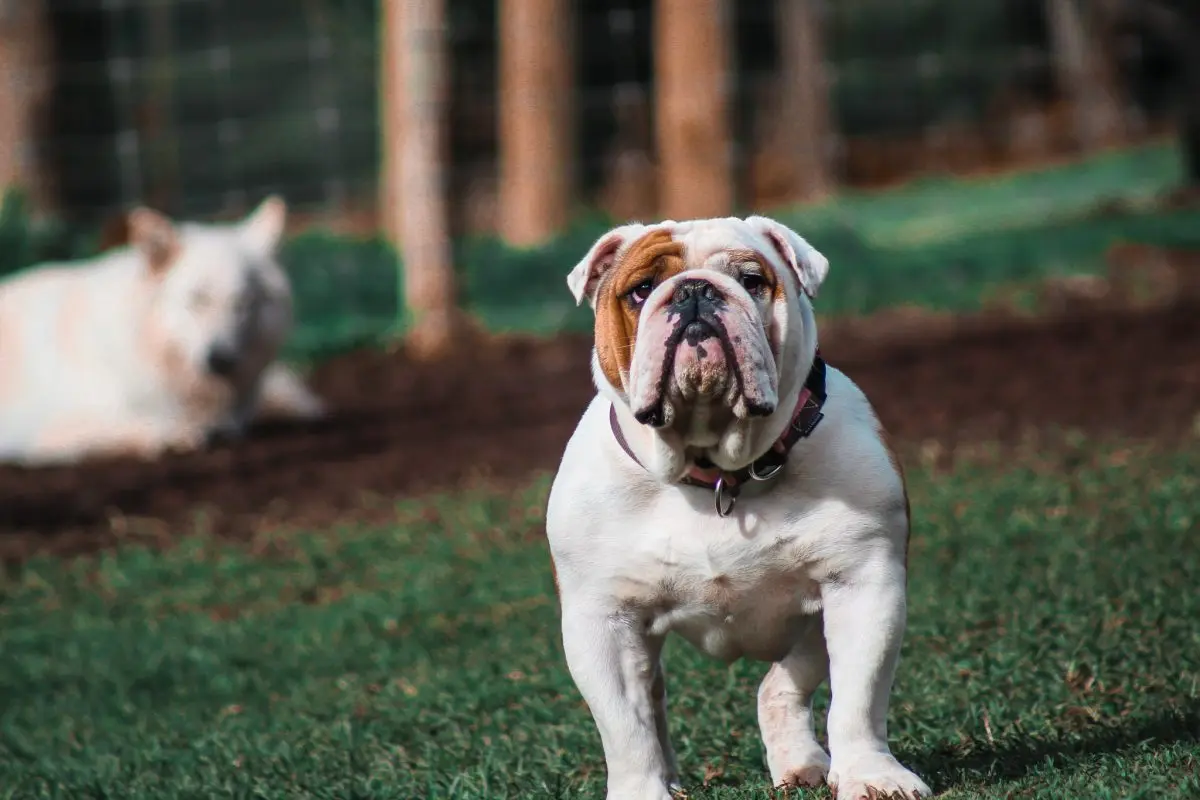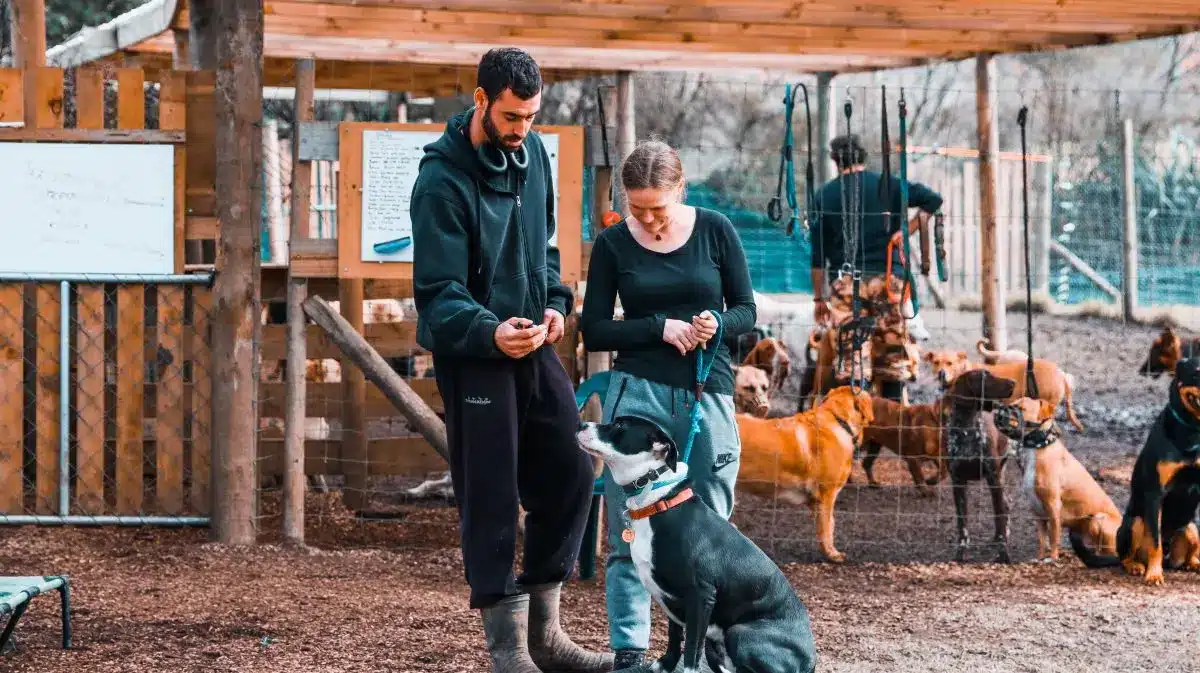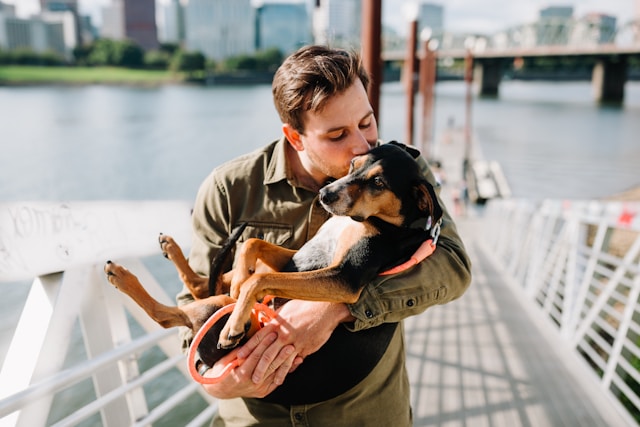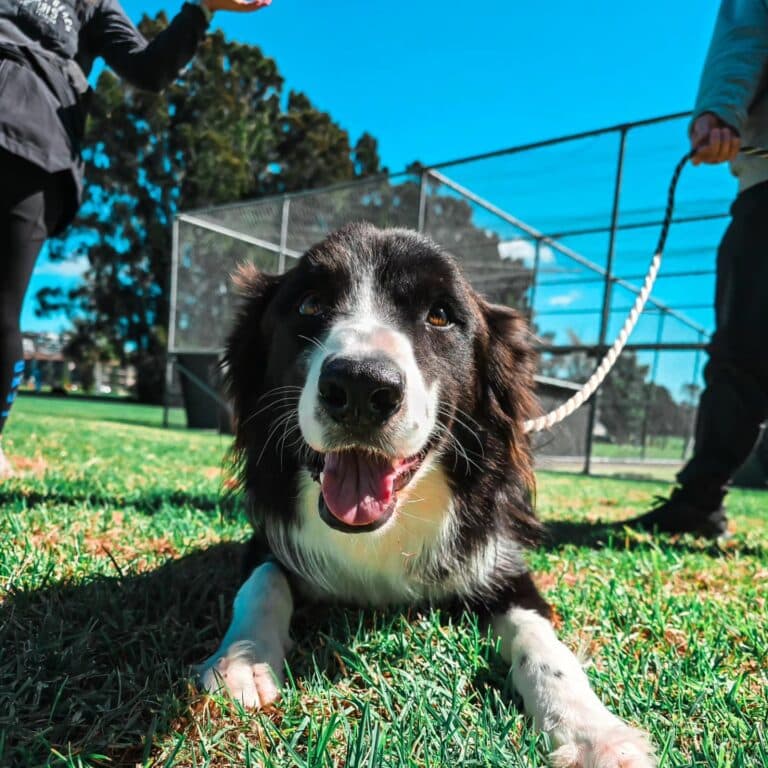Let’s talk about dog anxiety and anxious dogs.
Do you have a dog that displays signs of Separation anxiety? In this article, we will go over the signs to identify Separation anxiety in dogs and how to help them.
You might know the some of these signs of anxiety in dogs already.
- They pace around and won’t settle.
- Constantly following you around.
- Pants a lot even when they have not done any exercise.
- They get the shakes or shake after being touched or when not being touched.
- Whines for no reason.
- Hyper-alter to noise.
All of these and more can be signs of Separation anxiety in Dogs.
In this article, we will go over the following
- So, what causes anxiety in dogs?
- When you do and do not give your dog affection
- Correct leash walking
- Down, Stays
- Consistency is the key to helping your dog with anxiety!
- Final Steps

So, What Causes Separation Anxiety in Dogs?
A major factor that is often overlooked is the dog’s genetics. If the parents of the dog you own had high levels of anxiety then it is common that your pup will show anxiety levels as well. Over the years we have found that dogs that have a genetic predisposition to anxiety commonly deal with stress in this manner. So this makes managing and learning about how to work your dog out of an anxious state more crucial to your dog’s mental health and living a happy, balanced lifestyle.
Some other reasons dogs may become anxious is through taught behavior unintentionally from their humans or a traumatic experience. Regardless of why your dog has or is developing anxiety, working on prevention, and improving your dog’s mental state can be achieved by implementing some of the following.
When you do and do not give your dog affection
So the first factor to consider is when you do and do not give your dog affection. It is common as dog owners to let our emotions take over in situations when we feel our dog is uncomfortable. We often feel like we need to comfort our dog when it is anxious with pats, cuddles, or baby talk, however, this will have adverse effects on your dog’s recognition of this moment in time. Because If you give your dog affection when it exhibits anxiety it will rather than, provide comfort actually increase the anxiety within your dog.
We are unintentionally rewarding the dog for the anxiety shown reinforcing this behavior for the next time they enter a similar situation. Are you with me so far? To help create balance in your dog’s mental health your dog must learn to deal with stress on its own. think of it like teaching a child to “self soothe”. The best way to do so is by following a few exercises I’m about to list to help manage separation anxiety in dogs.

Exercises to help with your dog’s separation anxiety
Correct leash walking
Teaching your dog to correctly walk on the leash is like a human meditating, breathing, relax. During this leash walk, we’re putting the dog into a relaxed state where it lets go of any anxiety and any stressors in life this is something every dog needs. This is why we talk about making sure our dog gets the correct amount of structured exercise – So calm leash walks not just ball throwing and free run time.
Down, Stays
Down stays are an excellent and very easy exercise to implement. What you need to do is put your dog into a down position for extended periods, teaching your dog to learn how to switch off. Because your dog’s brain will flow their body, encouraging them to maintain in a down encourages their brain to relax. This is very important for dogs showing high levels of separation anxiety as it will teach them how to let go, and cope under different stimuli and environmental situations. So during this process it is not uncommon for highly anxious dogs to wine, shake, and tremble, this is the dog processing and learning to contain itself. As time goes through your consistency of course! Your dog will improve their position, posture, and mental state will relax and this is a great sign that means we are moving forward in the right direction.
Consistency is the key to helping your dog with anxiety!
Although Separation anxiety in dogs can be one of the hardest things to deal with your dog as it requires a lot of consistency and a lot of exercises in a structured manner to get your dog into a stable and balanced headspace. Please be patient when working through this. If you find yourself becoming highly strung, angry, or anxious, take a breath, pop your dog away and continue when you are calm and focused again. If you are really struggling, we do highly recommend you book in for a training session to help coach you through reading body postures, how to act, react, and coach your dog through this phase in their life.
Okay so what next then?
We have a new online trainer available for you that is perfect for your dog. This trainer is designed to help owners and their dogs from home. Ryan takes you right from beginning to end on training any dog, anxious or non-anxious. This will help to create a rounded understanding for the human to communicate clearly with their canine companion. So you can easily train a fully obedient, calm, happy, house pet that you and your family can truly enjoy.
We have created an online dog training school and compiled all our techniques and skills to help your dog with their anxiety. In summary, dealing with anxious dogs takes time, patience. Getting the correct information to succeed in this training is one of the most important aspects. Communicating, reading, and understanding your dog as a dog, is what will create the success you are after.
Want to hear more from Ryan? Tune in to the Facebook live stream we go Live over on Facebook at 7.30 pm on Tuesdays and Thursdays, real-time, real talk, answering questions directly from you.
If you have any questions about our dog daycare services or would like to book a place for your pet, please get in touch with us at 027 911 4115. or simply fill in an enquiry form




